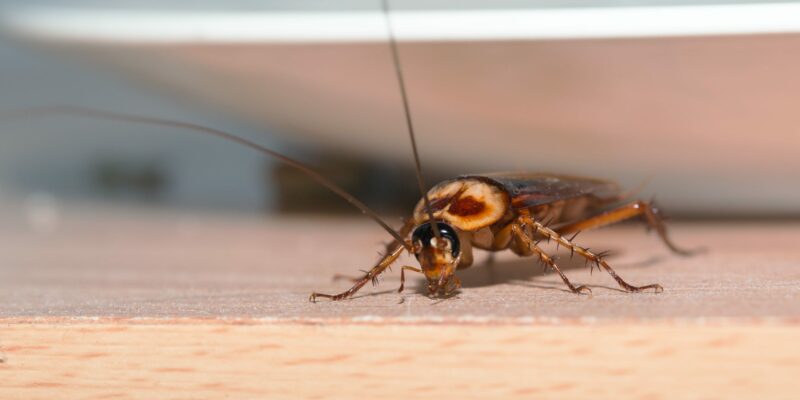Pest-related allergies are severe and can cause considerable discomfort and even health problems. They affect people of all ages but are most common in children and elderly people.
A certain percentage of people in the United States suffer from pest-related allergies. If you or someone you love is experiencing symptoms of an allergic reaction to pests, getting the proper diagnosis and treatment is essential.
Understanding how pest-related allergies work can help you recognize the signs and symptoms so you can take early steps toward preventing further exposure.
What are common pests causing allergies?
Almost all common household pests – from fleas to cockroaches – can cause allergies. Pests that are most likely to trigger allergic reactions include:
• Dust mites – Tiny bugs that feed on dust and dead skin cells are commonly found in bedding, furniture, carpets, and curtains. Dust mite allergies are among the most common allergies. Both feces and their hard shells can cause allergies and trigger asthma when inhaled.
• Bed bugs – Although they don’t often cause serious harm, bed bug bites can be very itchy and cause an allergic reaction in some people.
• Cockroaches – They can be found almost anywhere, from kitchens to bathrooms to basements. Although cockroaches can somehow help in controlling bed bug population, because cockroaches eat bed bugs, cockroaches can trigger allergic reactions and asthma attacks through excrement and enzyme protein in their saliva.
• Rodents – Rats and mice can trigger allergic reactions due to their droppings, fur, and urine.
• Fleas – Found primarily on animals, flea bites can cause a rash or other skin irritation in humans.
• Termites – Termites also may trigger allergic reactions. This is because termites produce allergens in their feces.
What are the symptoms of pest-related allergies?
Pest-related allergies are incredibly common and can cause various symptoms ranging from minor to significant. Common symptoms of pest-related allergies include sneezing, watery eyes, coughing, and rashes.
In addition, some people may experience breathing difficulties due to pest allergens such as dust mites and cockroaches. Symptoms will vary depending on the severity of the allergy and how often one is exposed to pest allergens. Additional symptoms a person can experience include hives, itchiness, asthma attacks, respiratory issues, fatigue, and digestive problems.
If these symptoms worsen over time or don’t respond to traditional treatments, then visiting a doctor is recommended to rule out other possible causes. In addition, taking preventative measures such as pest-proofing your home or workplace can greatly reduce pest allergens and the potentially serious effects they can cause.
How is a pest-related allergy diagnosed?
A pest-related allergy diagnosis typically begins with a physical evaluation to identify possible causes of symptoms and assess immune system activity. The doctor may also review the patient’s medical history to rule out other potential triggers or infections.
Once pest-related allergies are suspected, an allergy skin test can be done to accurately and specifically identify the pest responsibly. A pest-related allergy is usually identified by exhibiting a skin reaction such as redness or swelling after exposure to a specific allergen.
In addition to the skin test, blood tests can also be used to help measure and diagnose pest-related allergies. The results of these tests will help determine the most effective treatment for managing symptoms and minimizing future reactions.
How to get rid of pests and allergies?
It is important to take preventive measures to reduce the risks of allergic reactions from pests. This includes keeping your home or workplace clean and free of food scraps or spills that can attract pests.
Additionally, sealing cracks or openings in walls or floors where bugs or rodents may enter can prevent an infestation. Regularly washing bedding, curtains, and other surfaces with hot water can also help remove dust mites and any other allergens that may be present in the home.
If you suspect an infestation of pests, it is important to contact a professional pest control company termite treatment Dallas as soon as possible to assess the problem and treat it accordingly. This will help to reduce the risk of further allergies and maintain a safe living environment.
Additionally, your doctor may prescribe medication to help manage allergic reactions and reduce symptoms. These preventative measures can go a long way toward reducing the effects of pest-related allergies and living an allergy-free life.
Conclusion:
Pest-related allergies can be a significant source of discomfort and distress for those affected. Taking preventive measures such as keeping your home or workplace clean, sealing off cracks, and washing surfaces with hot water can help to reduce the risk of an infestation.
If you suspect an allergy related to pests, it is important to seek medical advice to identify the allergen and receive treatment options. Also a professional pest control can help to eliminate pests causing allergies. By following these steps, you can reduce the symptoms of a pest-related allergy and live an allergy-free life.













[…] lifespan. Professional cleanings are done periodically to help not just in terms of sanitation and pest-related allergies but also in enhancing the aesthetic appeal of your rugs, bringing the colors alive and fluffing its […]